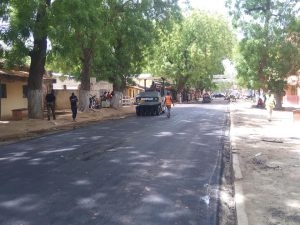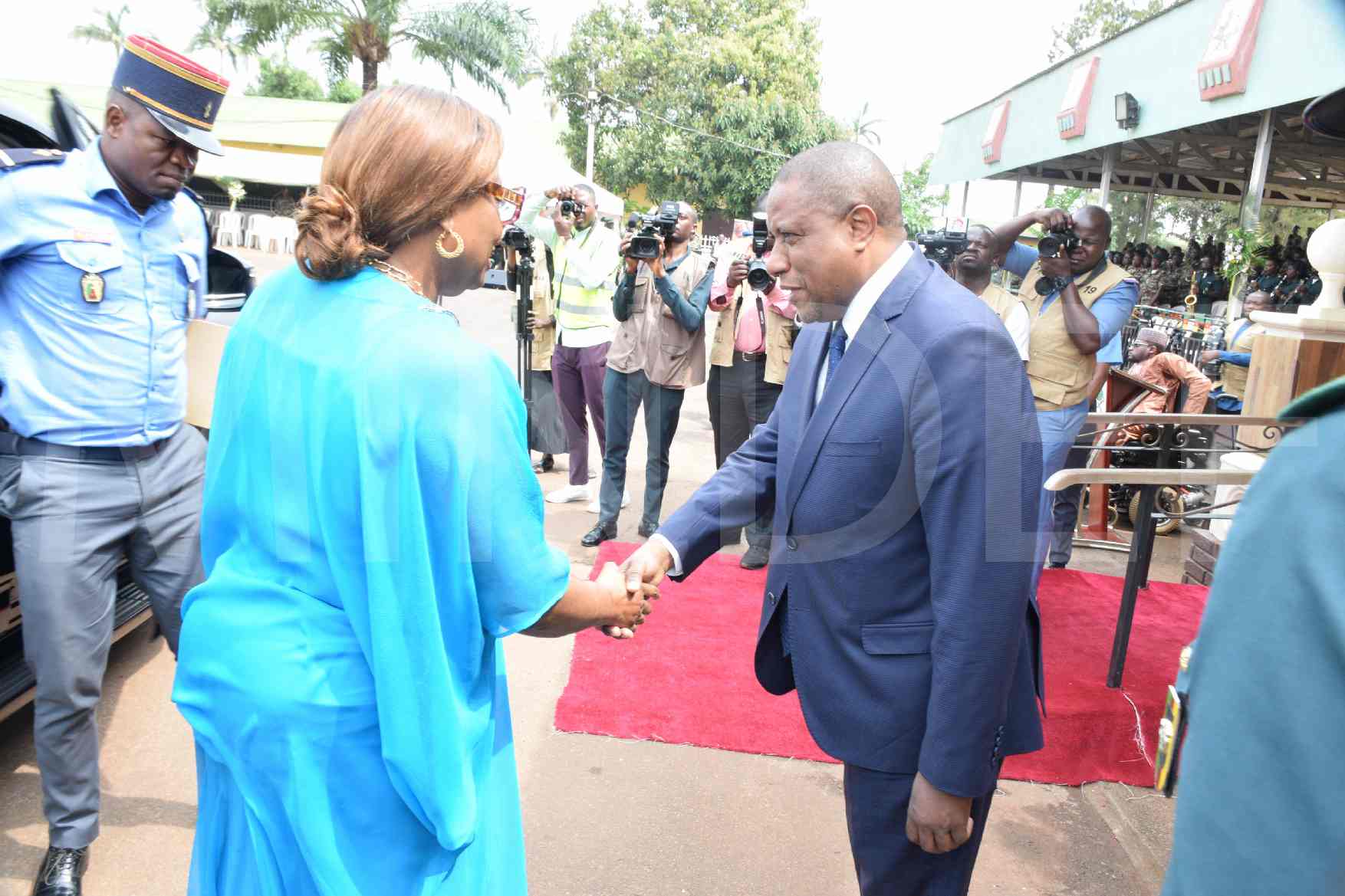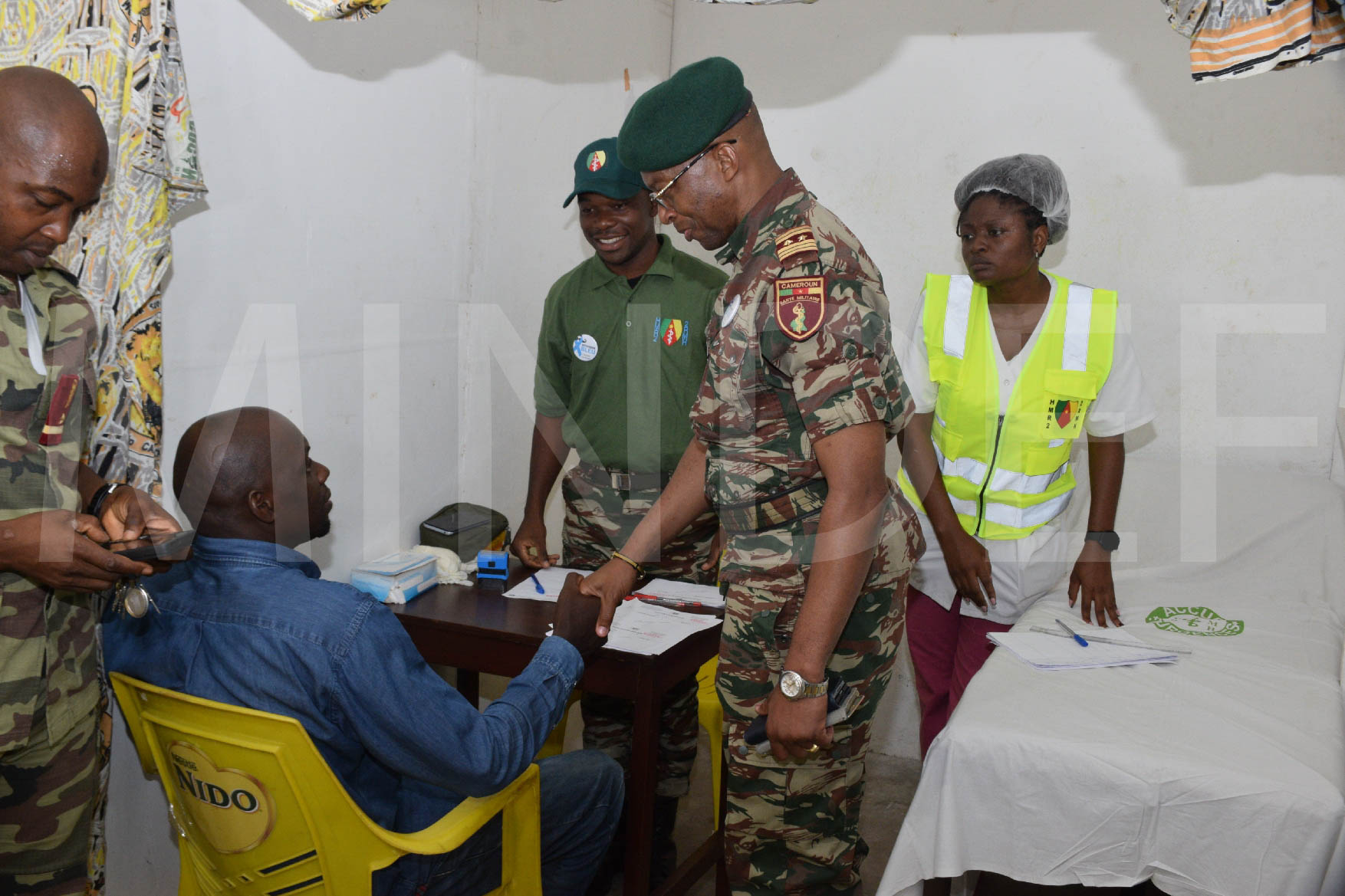The Army is not only considered as a shield to protect the integrity of the territory because today, the conscription Army has given way to the professional Army. Consequently, the question of the relationship between the Army and the Nation is not limited to the protection of persons and goods, but it is extended to other fields such as research, economic and social development, health… Thus, the participation of our Defence Forces in the economic and social development of the Nation constitutes the granite base of this link between the Army and the Nation. It is therefore appropriate to question the part played by the Military Engineering Corps in the strengthening of the Army-Nation link.
Just a year after its creation, the missions of the Military Engineering Corps, which were previously limited to combat, were extended to the infrastructure construction, thereby inserting this branch of Army at the heart of the economic and social development of Cameroon. Since then, and thanks to its actions for the benefit of the populations, the Military Engineering Corps keeps working to strengthen the Army-Nation link.
The 2001 reform having instituted the rejuvenation and professionalisation of the personnel as well as the modernisation of equipments, the analysis conducted carried out in this article will be based on the actions of the Military Engineers before and after the said reform.
I. ACTIONS OF THE MILITARY ENGINEERING CORPS BEFORE THE 2001 REFORM
In Cameroon, the Military Engineering Corps is both a branch of Army and a service. Its duality is an exception as it is at the same time in charge of the engineering support to the Armed Forces and acts within the context of the participation of the Defence Forces to the economic and social development of the Nation. Since its creation until 2001, the Military Engineering Corps participates in the consolidation of the Army-Nation link in several sectors, especially in road, educational and various works, social and civil protection.
- Road sector
The Military Engineering Corps was created in an altered security context in which the various rebellions were undermining the country’s young economy through actions of sabotage of the different means of communication. The interventions of the Military Engineering Corps allowed the restoration of circulation where it was no longer possible, thus opening up certain localities to facilitate law enforcement.
In the roads and transport field, the action of the Military Engineering Corps is spread throughout the national territory. As an illustration, we can mention, among others, the paved roads Sangmelima-Djoum, Mintom-Lele-Mbalam, Mokolo-Nkolbisson-Zamengoé (with the construction of two interchanges), Soa-Omnisport, Camp SONEL Essos-Nkoldongo and Nouvelle Route Bastos in the Central region. In the Littoral, the Loum-Yabassi, Yabassi-Bonepoupa, General Hospital-Cite des Palmiers roads are to be credited to the Military Engineering Corps. In the North, the Lamoudan-Lagdo road leading to the hydroelectric dam on the Benoué River at Lagdo was built. In the South, the Lolodorf-Bikoka-Bibia-Bibondi road, Mintom… As for the West Region, there are the roads Bana-Batcha, Dschang-Fokoué and Bafang-Yabassi. As it is in the other regions. These works have had a significant impact on the well-being of the population who have also contributed their voluntary and spontaneous manpower.
- Educational sector and various infrastructure works
Within this context, the Military Engineering Corps has built schools in Alati and Mbalam in the southern region, thus providing the populations of these localities with a space for education. Similarly, the construction of the Mbangue and Lokomo bridges on the Yokadouma-Moloundou road and a bailey bridge at Widikum (North-West) and Konye (South-West), as well as the development of the site for the Ngaoundéré airport and an 800-metre airfield at Nguti, will help open up the localities concerned and promote trade. With regard to trade, the construction of the Mokolo market platform in Yaoundé provides the population with an adequate framework for trade; today, this market is one of the most important in Cameroon and even in the Central African sub-region.
- Civil protection and social sector
Here, the works carried out by the Military Engineering Corps are part of the blossoming and protection of the populations. Thus, the actions of the Military Engineering Corps contribute to their well-being. Whether it is the drilling of wells in the districts of Obala and Batchenga or the “parcours vita” of Yaoundé, Douala and Bamenda, the physical, social, emotional and psychological well-being of the populations is targeted. In addition to this blossoming, the Military Engineering Corps contribute with their material and human resources to the assistance of the victims of natural disasters or accidents. This was the case during the rescue operations after the CAMAIR air crash on December 3, 1995 in Douala and for the construction of the laboratory and the observatory of Lake Nyos after the disaster of the said lake.
Since its creation until 2001, the Military Engineering Corps participates like all the other components of the Defence and Security Forces in the maintenance of the Army-Nation link. However, the reform of 2001 will create a fertile ground for the multiplication of the interventions of the Military Engineers for the benefit of the populations.
II. THE MILITARY ENGINEERING CORPS IN THE ERA OF THE 2001 REFORM
Under the era of the 2001 reform instituting rejuvenation, professionalisation and modernisation, the Military Engineering Corps benefited not only from an important endowment in materials and equipment but also from the reinforcement of its manpower thanks to the specialists of the 2006, 2011 and 2014 contingents. More than before, its field of action will become considerably denser and its missions will increase to the great satisfaction of the populations. In more than one way, the Military Engineering will illustrate itself as a means of strengthening the Army-Nation link, in crisis or non-crisis areas, notably under different spectrums: local manpower, operational agreement signed with administrations, decentralized territorial communities or other institutions, the fight against improvised explosive devices and disaster management.
- Operational Agreements
With the prior authorisation of the Head of State, Commander in Chief of the Armed Forces, the Military Engineering Corps may act as executing agents for infrastructure projects entrusted to them by the State or by private legal entities. Thus, an operational agreement is signed either with an administration, or with a decentralised territorial community, or with another institution (agencies -AFD-, projects -PLANUT, C2D).
More and more individuals would like the Military Engineering Corps to carry out their projects, as they take to heart in carrying out their missions in the way it ought to be, with an exceptional quality/cost/time ratio. Since 2001, we have witnessed an increase in the number of operational agreements signed for various projects for the benefit of the population. Among other projects, the most significant are, by way of illustration, the rehabilitation of the Cameroon Children’s Institute in Betamba, the construction of modern markets in Bertoua and Sangmelima, the development of tracks in the Ndonko production basin (Sangmelima), the construction of passive telecommunication infrastructures (Bakassi) the construction of the Saint Paul’s church of Olézoa, its residential annex and a 3-floor storey building at the College de la Retraite , the construction of classrooms and the construction of sixteen productive boreholes equipped with human-powered pumps on behalf of the C2D in the Far North region, the rehabilitation of roads in the North West and South West regions.
Once the agreements have been initialed, all that remains is the effective mobilization of the Military Engineering Corps to carry out their mission. For this purpose, it has often used local civilian labor.
- Local manpower
The systematic use of local civilian labor not only makes it possible to compensate for the lack of military engineers in certain situations, but it is part of a strategy that aims to strengthen the Army-Nation link, when security conditions are favourable. In fact, the Military Engineering Corps favor, in acceptable security conditions, the so-called labor-intensive approach by the optimal use of its means (material and human) in adequacy with local resources such as labor, materials, suppliers and know-how to promote job creation during the realisation of its missions. Here the determining factors taken into account are the areas where the mission is to be carried out (crisis area or not) and the deadlines. The operationalisation of this strategy is done with the religious and traditional authorities who have a good knowledge of the individuals in situ, in terms of probity.
- Counter-IED and Disaster Management
The Military Engineering Corps regularly provide counter-IED awareness training to the Defence Forces, the population, United Nations personnel stationed in Cameroon, National Security officials, as well as security personnel from certain embassies, notably the French Embassy in Cameroon. Moreover, during important events (major sporting events or events that have to gather large masses), the Military Engineering Corps is mobilised. On these occasions, the specialists in the fight against IEDs are on standby in order to ensure the operational watch in the fight against explosive device attacks.
It should also be noted that the population is very involved in the fight against IEDs, by not hesitating to denounce any suspicious activity or object. In the Far North region, for example, members of vigilance committees risk their lives by helping to identify suicide bombers in their locality.
Regarding the participation of the Military Engineering Corps in disaster management, the cases of Eseka and Ngouache still leave their mark on people’s minds, as this Army weapon stood out for its mobilization on very short notice to face, once again, an emergency situation. Putting its know-how to the benefit of the population, the Engineering Corps were able to facilitate the rescue operations, or even the removal of the remains.
CONCLUSION
With regard to its wide expertise in building and public works, and its specialisation in emergency works in degraded environment, the Military Engineering Corps has become a precious tool of the State in its program of participation of the Defence in the national action of development, and of national resilience. Thus, it acts as an executing agent for the construction projects of military infrastructures and, also, those entrusted to it by the State or private legal entities, upon prior authorisation of the Head of State, Commander in Chief of the Armed Forces. The Military Engineering appears therefore as a means of strengthening the Army-Nation link.
The 2001 reform has put it in the spotlight with a significant increase of its missions which are more demanding and complex. That is undoubtedly the reason why the Head of State, Commander in Chief of the Armed Forces has instructed the reorganisation of the Military Engineering Corps so that it becomes more efficient and effective in the current security context.






